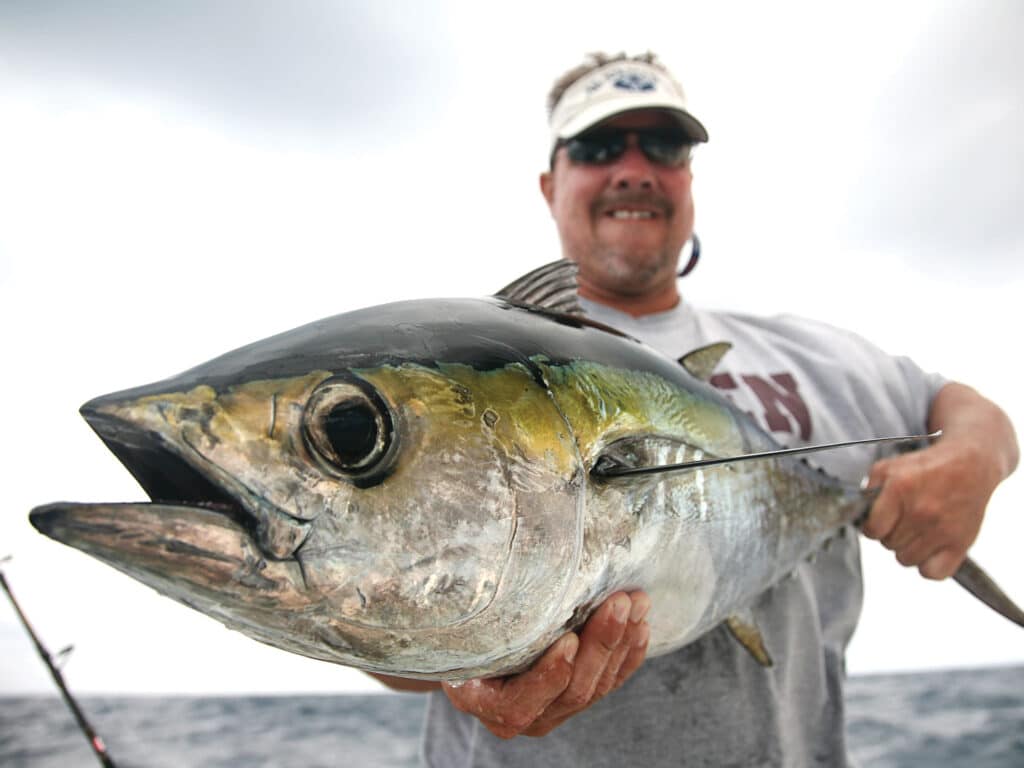
Anglers fish in so many different conditions: prime ocean with features for specific pelagics; bottom structure where currents influence where fish will stage; inshore docks and bridges. Is it any surprise that we must tweak our techniques based on the conditions we encounter?
All this variability means you have to treat rigging live baits for inshore, coastal and offshore gamefish like a science. If you can isolate the behavior your target wants to strike, you can use hook placement to make your bait behave in that fashion.
We’ve used dead baits here to illustrate five ways to rig them live so that they’ll swim the way you want when you’re on the water. Give these hook placements a try and see if your catches soar.
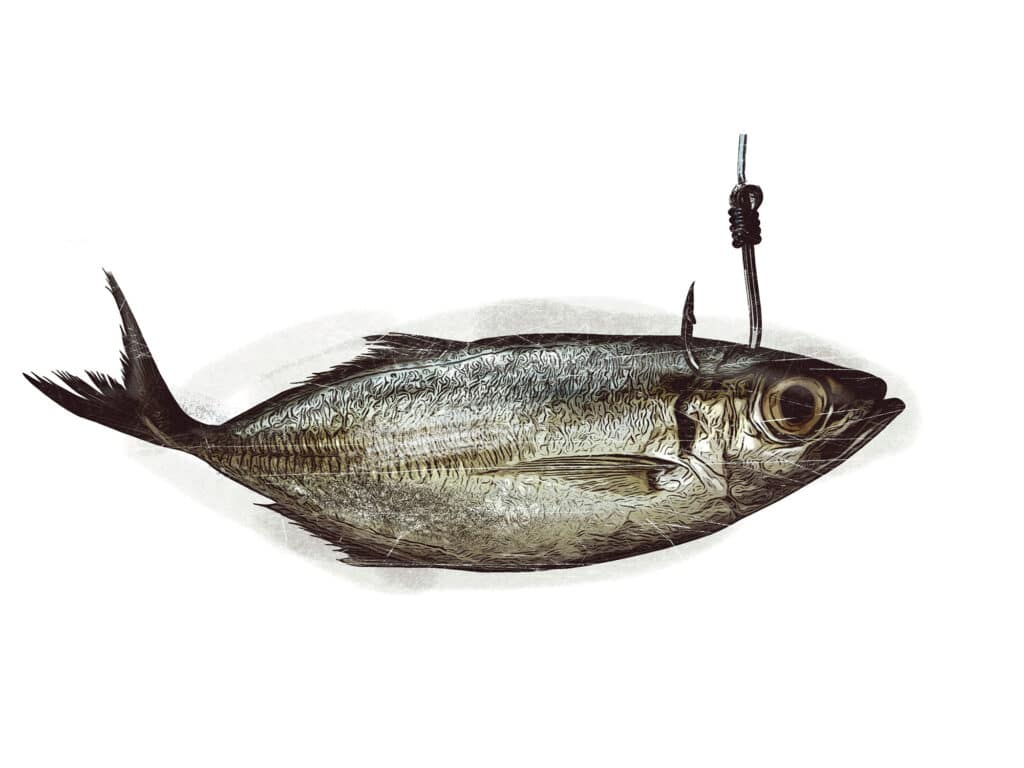
Dorsal
For baits intended for slow-trolling, drifting and kite-fishing, primarily goggle-eyes, runners and mullet, place a hook in front of their dorsal fin. This, along with the pressure from taut lines and a moving boat, promotes a slightly downward swimming attitude. Especially important for kite-deployed baits, the down-turned head and swimming motion of a dorsal-hooked bait will keep water flowing across its gills, even as its back and tail splash in the waves at the surface.
The closer a hook is placed to a bait’s dorsal fin, the deeper that bait will dig. For a more horizontal attitude, position the hook farther forward.
Bridle your baits when you can; this technique delivers better hookup ratios.
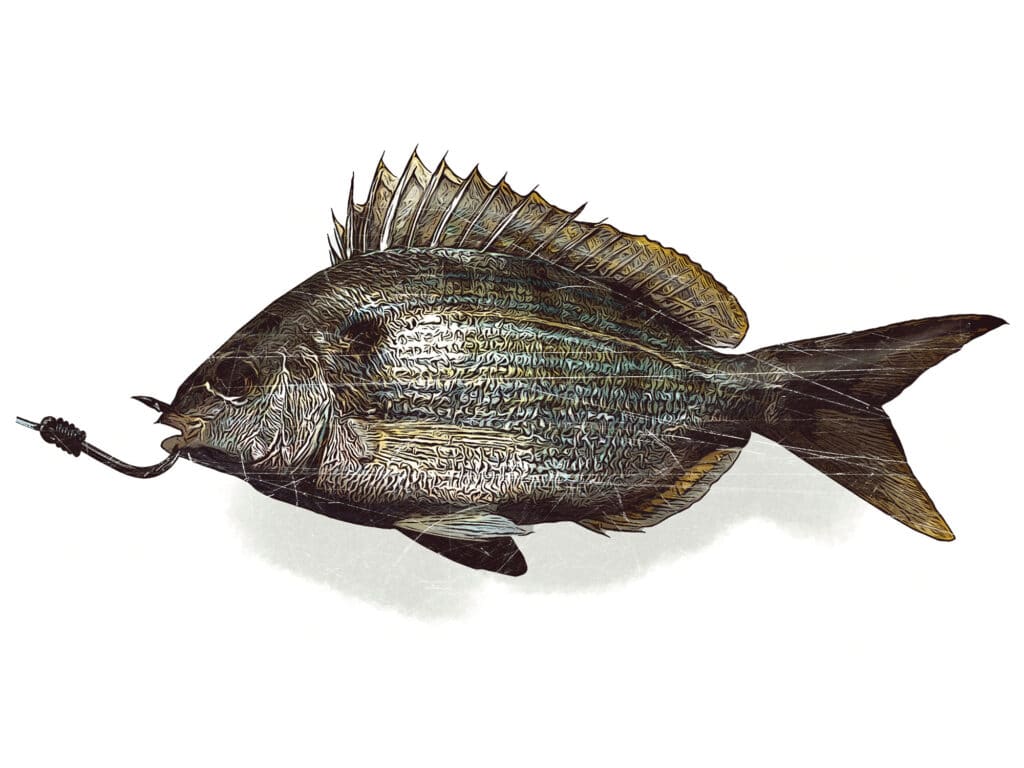
Nostrils
You should also use bridles when pinning the nostrils of midsize baits like horse pilchards, large herring and menhaden. Nostril-pinned baits swim near the surface with a drifting boat and into the current at anchor.
Nostril-hooking also works well for probing around bait schools, bridges, passes and inlets. It’s also good for pitch-baiting and bottomfishing when you’re fishing with a weight.
With smaller baits, or when bridling isn’t practical, simply run the hook sideways through the nostrils or up through and out the jaws, preferably exiting the hard spot behind their lips. We like jaw-hooking like this when free-lining smaller pilchards and herring for sailfish and mahi. A drop-back isn’t necessary, so these rods are placed in holders. Upon a strike, the rod bends, line races off its reel, and a circle hook sets.
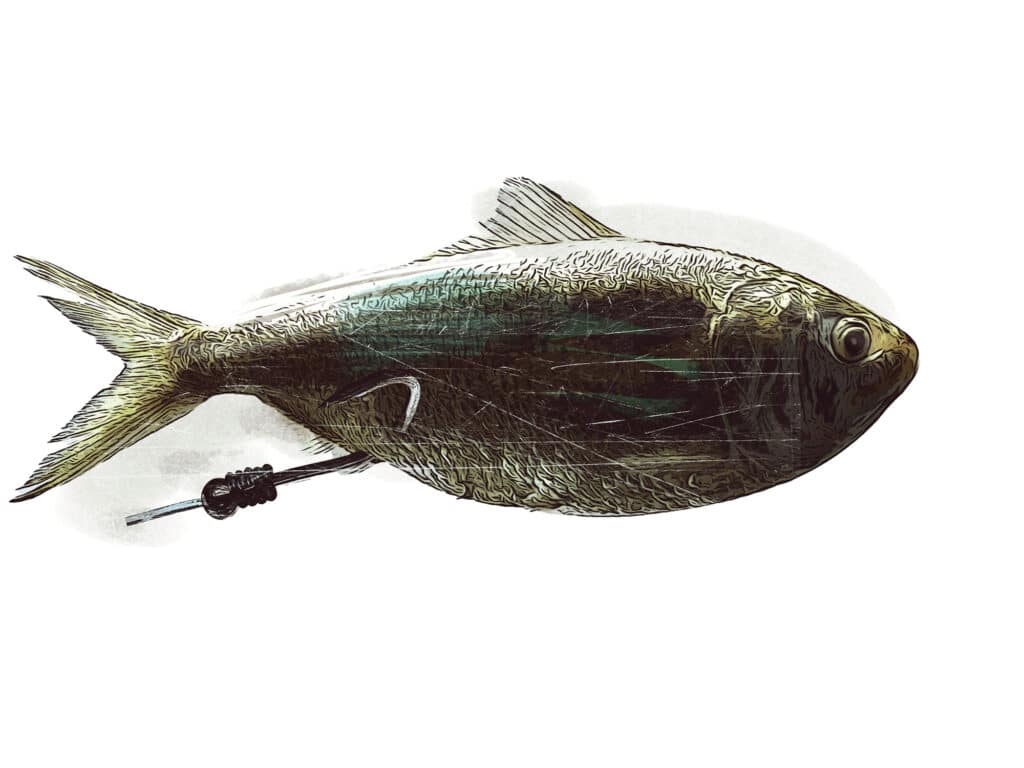
Anal Fin
If you want your bait to swim away and even downward from your boat, place a hook in front of its anal fin. Cast it out and, while free-lining, periodically tug on the line. Doing so interrupts the bait’s forward momentum and slows the oxygenated water flowing across its gills, causing it to panic. A panicked baitfish instinctively swims harder and away from the force that’s slowing it down to maintain that crucial water flow.
The tactic works well at middle depths when bottomfishing, and around docks, jetties and bridges for snook, tarpon, seatrout and snapper. It’s also a good option for patch reefs and offshore wrecks for snapper, grouper, cobia, king mackerel, tuna and sailfish.
This placement is best on a setup designed for free-lining a bait out, holding it in place for a bit, then reeling it back and repeating. It’s also productive for free-drifting, power-drifting, or anchoring in a mild current. But bait held stationary in a fast current or drift will die more quickly.
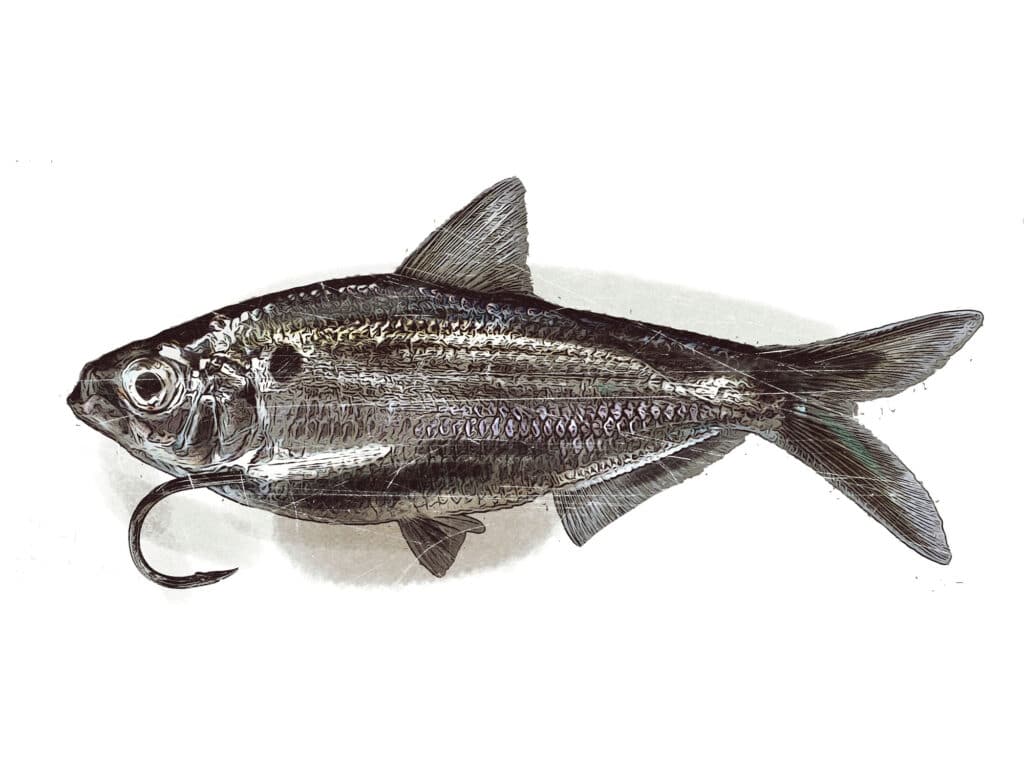
Anal Vent
Run a hook through a bait’s anal vent and out its side to give it a panicked wobbling and darting action that will often draw strikes even when fish aren’t on their feed. This hook position also leads to more successful hook-sets, partly because the hook is so exposed.
This has long been a favorite tactic of mine when anchoring for grouper and snapper, and works well with pilchards, herring and even pinfish. The placement is also effective when you’re anchoring and probing bridges and nearshore structures for a wide variety of fish the likes of snook, tarpon, striped bass, cobia, seatrout and others.
Its disadvantage is that your bait won’t live long when you hook it this way. But that’s not usually a problem because if there are fish around, they’ll eat it rather rapidly. Should they not, simply reel up and replace the bait as soon as you stop feeling it move. Keep the action fresh and frisky.
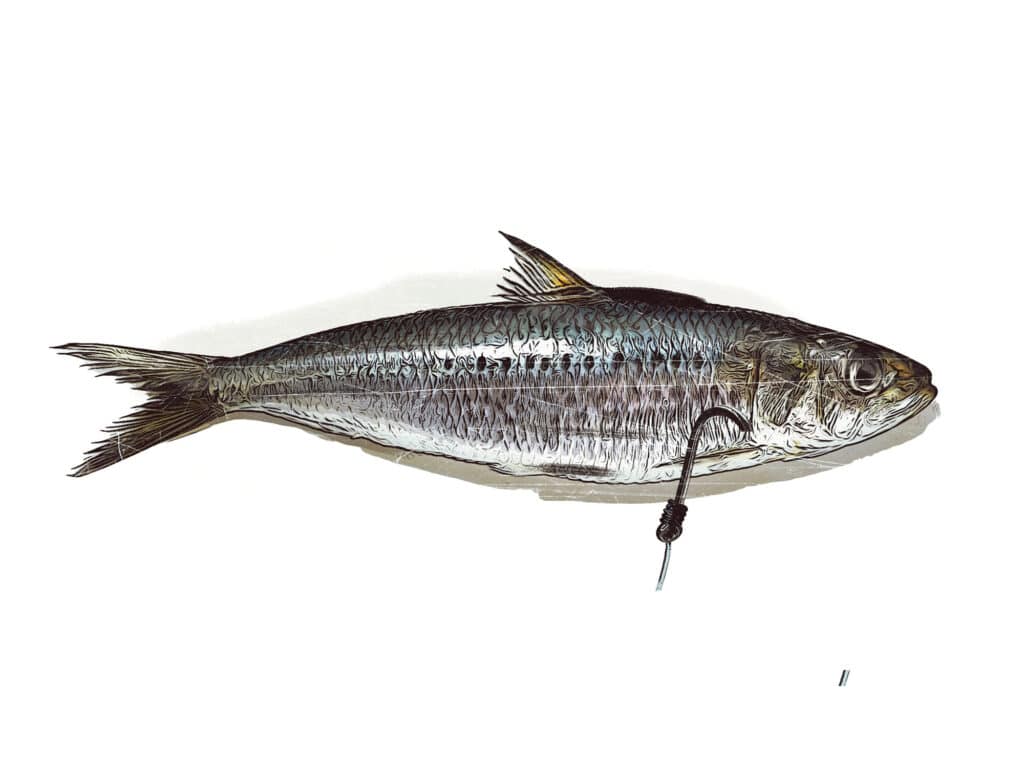
Throat
Throat-hooking also forces a bait to swim deep. Every pause on the line prompts it to swim harder and downward to keep from drowning.
This tactic excels when live-chumming and pitching live pilchards for blackfin tuna, king mackerel, snook and yellowtails, and even casting to tailing sailfish.
It’s also yet another hook placement we use for bottomfishing, tethered to a long leader (30 to 50 feet) for mutton snapper, or a short one (5 to 10 feet) for grouper. Throat-pinned baits dart and struggle upward from the bottom, their altitude kept in check by the distance between the hook and sinker. Their upward struggling action often delivers better here than the horizontal action of anal-fin-hooked baits.
Don’t discount throat-hooking for inshore species either, especially when you’re trying to swim a bait to the bottom of a bridge, jetty, piling or pothole, the domains of most of our favorite gamefish.
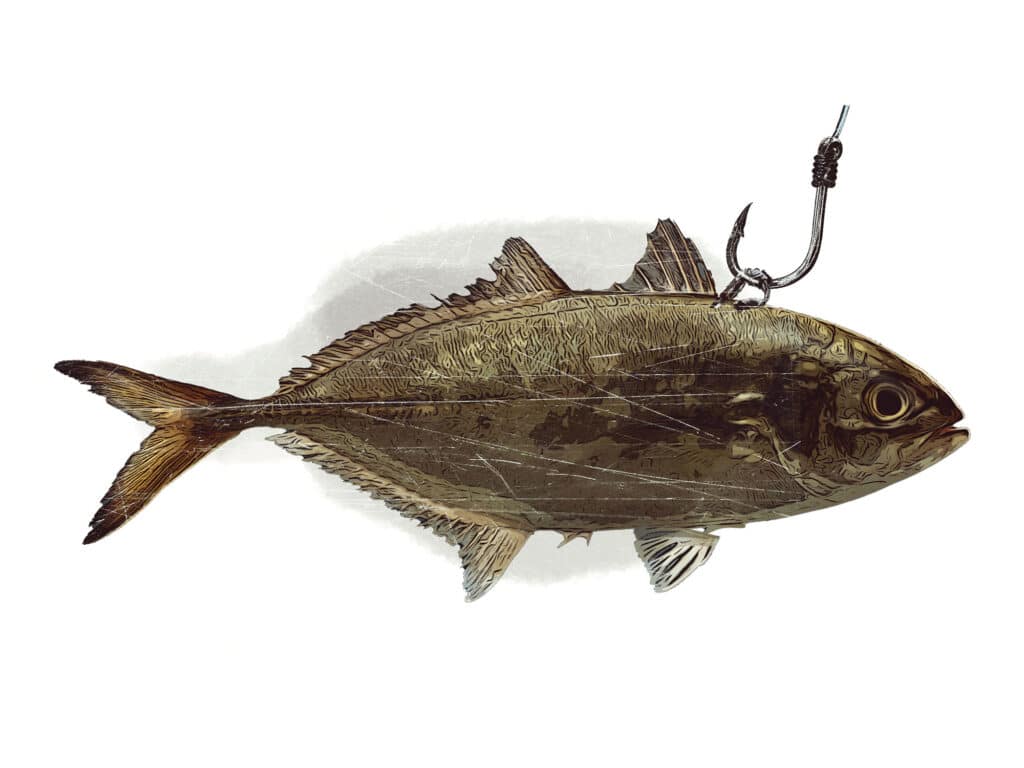
Top Choice: Bridling
Bridling significantly reduces the chances of a hook point turning back into a bait. With narrow-bodied fish such as goggle-eyes, runners, speedos and menhaden, run the bridling needle and orthodontic-style rubber band sideways through the bait. Go deep enough to keep the bait on the hook, yet not so deep to hit a vital organ. § With broad fish like mullet, position the circle hook in line with the bait’s head, and its shank closest to the dorsal area. This hook placement is most effective when using broad baits. What’s more, on the set, the circle hook pulls straight forward and into a fish’s jaw; it doesn’t have to first turn out of the bait. When a sailfish, tuna or mahi consumes a bait, it does so headfirst. Thin-profile baits pose few hookup issues; however, a broader bait may interfere with a solid hook-set.









